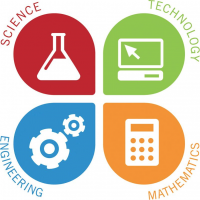What about STEM to STEAM?

If you have kids in school anywhere from pre-kindergarten through grade twelve, by now you’re probably very familiar with STEM (science, technology, engineering, and math). The need for greater emphasis in curriculum on STEM subjects is widely publicized and promoted as critical for today’s students to thrive in our tech-driven society.
“The future of the economy is in STEM,” says James Brown, the executive director of the STEM Education Coalition in Washington, D.C. “That’s where the jobs of tomorrow will be.” Data from the U.S. Bureau of Labor Statistics (BLS) STEM 101: Intro to Tomorrow’s Jobs reports that “Employment in occupations related to STEM—science, technology, engineering, and mathematics—is projected to grow to more than 9 million between 2012 and 2022. That’s an increase of about 1 million jobs over 2012 employment levels.”
Some warn that American students are still falling behind other countries in the critical subjects of math and science. The World Economic Forum ranks the U.S. as No. 48 in quality of math and science education according to the National Math + Science Initiative. For 2015, the White House budget proposes $2.9 billion for federal investments in STEM education, an increase of 3.7 percent over 2014 funding levels.
But consider for a moment: Is a total push for STEM subjects the best approach? Are we overlooking other subjects critical to innovation?
Welcome to the STEM to STEAM movement. In the United States, STEAM is, well, steaming ahead. Supported by the Rhode Island School of Design and others, STEAM advocates adding “Art + Design” to the equation and transforming STEM into STEAM.
Steve Jobs, for one, was passionate that technology alone couldn’t produce great products. Jobs’ famous slide depicting the intersection of art and technology says it all, as does his speech at the launch of the iPad2:
I’ve said this before, but I thought it was worth repeating. It’s in Apple’s DNA that technology alone is not enough. That it’s technology married with liberal arts, married with the humanities that yields us the result that makes our hearts sing.
What do you think? To learn more about the STEM vs. STEAM approach, look at the infographic created by the University of Florida.

